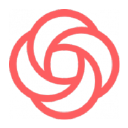The $6K/Month Website That Teaches How To Launch Businesses And Build Apps With No-Code Tools
Hello! Who are you and what business did you start?
Hi! My name is Seth Kramer and I’m the founder of No Code MBA. I started the company about 6 months ago to teach people how to launch businesses and build apps using no-code tools.
No Code MBA consists of over 150 (and growing) real-world video lessons building apps like Tinder, Zillow, and Product Hunt. The site offers both free and paid courses. The paid courses are all under the No Code MBA Unlimited membership - so when a customer signs up they get access to all courses on the site.
Since starting, I have over 400 paid No Code MBA members, and am quickly growing that number each month.

What's your backstory and how did you come up with the idea?
I’ve been an entrepreneur for almost 10 years now - I started my first business in college - a meal plan service for college students. I worked on it on nights and weekends while I had a full-time job at a startup, eventually grew it to a 7-figure business, and was able to become a full-time entrepreneur.
I’m always looking for different tools and opportunities, and have been using many no-code tools including Zapier, Typeform and Squarespace before “no-code” was a trend.
About a year ago I came across Glide, a no-code tool to build apps using a google sheet as the backend. At the time, I was looking for a new side-project to start and decided to create a conference app business using Glide called ConferenceTap
I cold emailed upcoming conferences asking if they needed an affordable conference app, and sold more than 5 conferences in the first two months. I was excited to grow ConferenceTap in 2020 when COVID hit the US, halting in-person conferences and essentially halting all ConferenceTap sales.
That's when I decided to pivot to No Code MBA - using everything I’ve learned over the past 10 years building businesses with no-code tools to teach others to do the same.
Take us through the process of designing, prototyping, and manufacturing your first product.
I had never recorded a tutorial before, so there was a lot to learn and get comfortable with to create the first course. The first tutorial I recorded was how to build a real estate app like Zillow.
When starting an education company, I think it’s helpful to give away as much free content in the beginning as possible to build trust with your audience.
I didn’t spend a lot of time planning out what I would say in the course - instead, I simply started recording using Loom and talked through what I was doing as I built the app. When I record a tutorial, I try to explain every detail, so even if someone has never used the tool before they would be able to build the app.
Once I finished recording, I used iMovie to edit and split the recording into specific lessons. Then I put the videos on Youtube under a private link (so only people with the specific link could view it), embedded them on my site, and shared it with the Glide community.
In addition to recording the tutorial, I had to build out the No Code MBA site. I used Webflow (another no-code tool) to build the site and host the videos. The initial costs were very low (just the cost of the domain and Webflow hosting).
Describe the process of launching the business.
To start, I built out the initial site using Webflow, set up an email list, and shared the first few courses with the Glide community for free. I kept creating more courses and adding content to the site, and after a couple of months put the more premium courses behind a paywall.
I emailed my subscribers and charged $50 for lifetime access to all content and immediately got about 20 subscribers! This was a super validating moment to know that customers were willing to pay for the content.
Below is a screenshot of the first version of the website!

Since launch, what has worked to attract and retain customers?
Much of my growth so far has come from sharing free content with online communities where it would be valuable. This starts with free tutorials but also includes articles (11 business ideas you can build without code), interviews with no-code founders, and a no-code tool guide.
By sharing free content and providing value for free, you build trust and give people a reason to keep coming back to your site.
I’ve also been working to grow my reach on Twitter, where the No Code MBA account now has over 1500 followers, and my personal account is over 1200 followers. Every time I have a piece of new content I’ll share it on Twitter.
I make it easy for people to subscribe to my newsletter when they’re on the site, which helps with retention and upselling to a premium membership.
As you can see, much of the growth so far is organic - sharing content with the right audience online and building trust over time.
I’ve done a small amount of paid ads on Twitter and Facebook, but so far haven’t invested much and haven’t seen great results from those channels. I think this could be a great channel but will take more investment to find the right formula.
One area I’m focusing more on lately is newsletter advertising. I’ve done two tests so far which were both profitable, and am going to keep testing out this channel to see how it scales over time. Newsletters seem like a great channel because of how targeted the audience can be.
How are you doing today and what does the future look like?
No Code MBA is currently profitable. The margin is high, with the only costs being subscription fees for the tools I use to run the business (Webflow, Loom, Mailchimp, etc).
As I mentioned above, I’m starting to test out newsletter advertisements which will drive up to my expenses but also hopefully help me grow the business more quickly.
Looking towards the future, I plan to keep doing much of the same - providing great content (both free and paid), increasing my reach, and growing the No Code MBA community.
My goal is for No Code MBA to be the go-to community for entrepreneurs to learn how to build their business without code, and also for businesses to automate their internal processes with no-code tools.
Through starting the business, have you learned anything particularly helpful or advantageous?
It’s very helpful to pick a growing industry. No-code is still very early on and growing quickly, and I think that’s made it easier to grow more quickly.
When starting an education company, I think it’s helpful to give away as much free content in the beginning as possible to build trust with your audience.
As an entrepreneur, you are essentially your own product manager. Building the habit of managing yourself through a system of to-do lists, deadlines, etc is very helpful to make sure you’re working on the right thing and making progress where it's most needed.
What platform/tools do you use for your business?
I built the entire business using no-code tools!
The website is built using Webflow and Memberstack. Webflow is for the website itself, and Memberstack allows me to offer memberships where paid members get access to premium content.
You could use a tool like Teachable or Podia (and it would be easier to set up), but the benefit of using Webflow and Memberstack is you can customize every part of your site and the full experience for your students.
To make the videos, I use Loom to record and iMovie to edit.
I also use Zapier to stitch together various automation - for example, to send payment receipts.
I use Mailchimp as my email provider.
What have been the most influential books, podcasts, or other resources?
A couple of great books I don’t see recommended often are: Purple Cow by Seth Godin (to learn how to stand out when marketing your product), The Design of Everyday Things (to better understand your product from the user’s point of view)
Podcasts: The Tim Ferriss Show (business advice & life philosophy), Acquired (breakdowns of successful businesses), This Week In Startups (fantastic advice specific to building a startup), My First Million (business ideas), Indie Hackers (learn about how founders are building profitable businesses).
Essays: Paul Graham’s essays are what first got me interested in startups. Derek Sivers also has great essays on both business and life.
Advice for other entrepreneurs who want to get started or are just starting?
One of my favorite ideas is an essay by Derek Sivers called Obvious to you, amazing to others. The idea is people might not create something because they think it’s too obvious or wouldn’t be useful to other people. When you realize what’s obvious to you is amazing to others, you realize just how many business opportunities there are.
Another tip is to think about the business model before you get started. The business model will drive many other parts of how you build the business, so it’s important to have an idea of what they might look like in the beginning.
Remember that it’s okay to keep launching to keep tweaking your product. What you start with likely won’t be what you finish with, but as long as you keep listening to users and testing new ideas, you’ll eventually come across a formula that is working. And the more you build and test ideas, the better your intuitive sense will be for what will work.
Where can we go to learn more?
- No Code MBA’s website
- No Code MBA’s Twitter
- Personal Twitter
- My podcast What Do You Think, brainstorms about business ideas and trends
If you have any questions or comments, drop a comment below!

Download the report and join our email newsletter packed with business ideas and money-making opportunities, backed by real-life case studies.

Download the report and join our email newsletter packed with business ideas and money-making opportunities, backed by real-life case studies.

Download the report and join our email newsletter packed with business ideas and money-making opportunities, backed by real-life case studies.

Download the report and join our email newsletter packed with business ideas and money-making opportunities, backed by real-life case studies.

Download the report and join our email newsletter packed with business ideas and money-making opportunities, backed by real-life case studies.

Download the report and join our email newsletter packed with business ideas and money-making opportunities, backed by real-life case studies.

Download the report and join our email newsletter packed with business ideas and money-making opportunities, backed by real-life case studies.

Download the report and join our email newsletter packed with business ideas and money-making opportunities, backed by real-life case studies.








